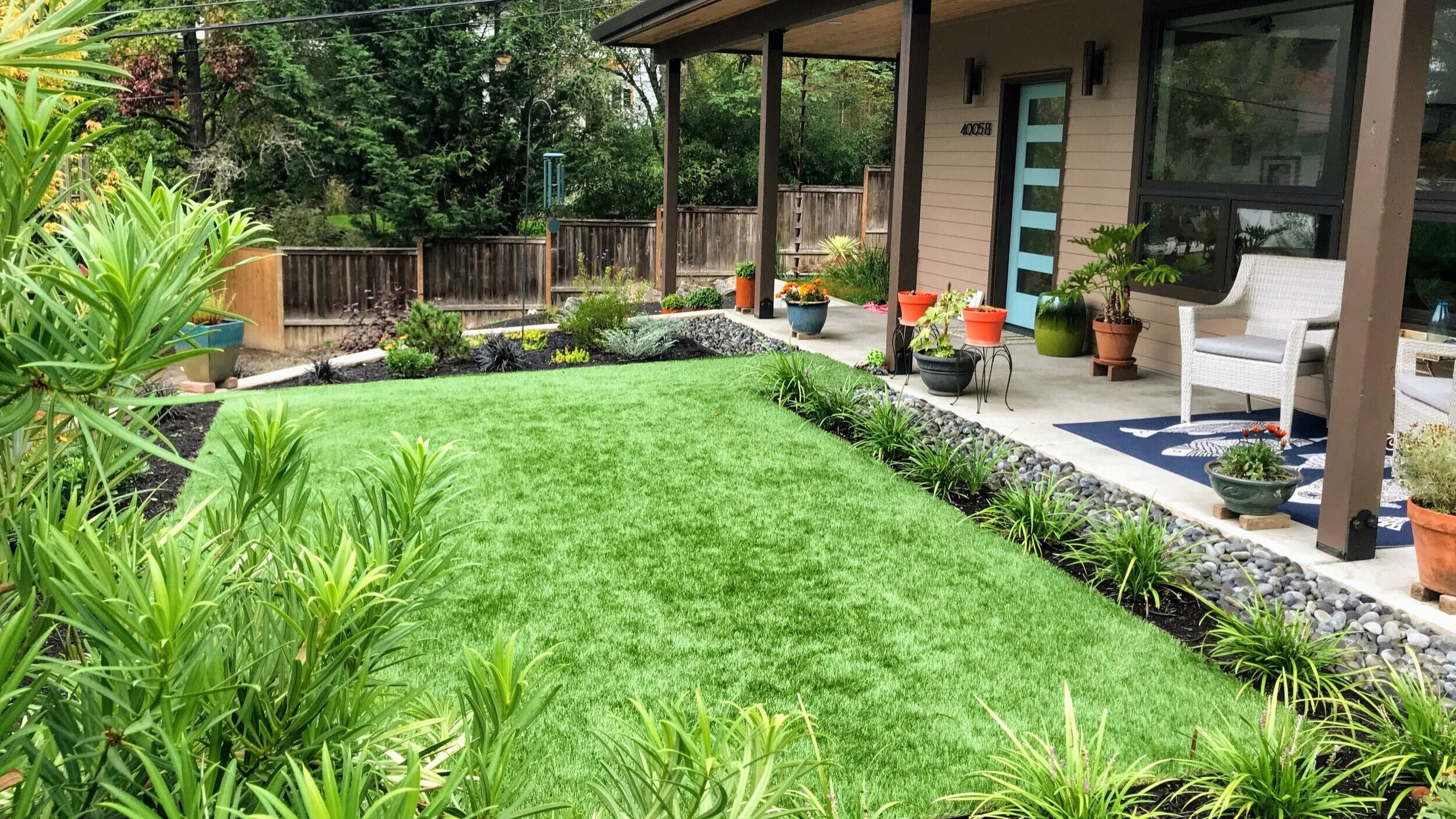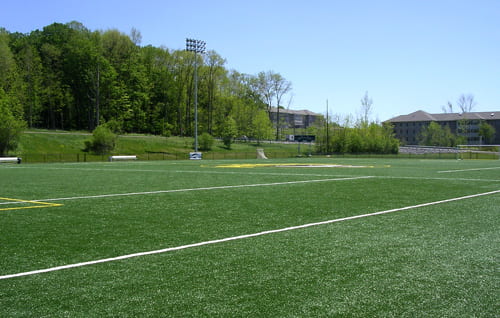Top Arizona Turf Suppliers Ensuring a Natural-Looking Lawn Alternative
Top Arizona Turf Suppliers Ensuring a Natural-Looking Lawn Alternative
Blog Article
Look Into the Environmental Benefits of Opting for Artificial Lawn Solutions
The adoption of synthetic lawn services provides a compelling chance to attend to pressing environmental challenges. By considerably minimizing water usage and reducing the application of harmful chemicals, these choices not only promote sustainable landscaping yet likewise safeguard regional communities. The lower carbon impact associated with decreased maintenance tasks adds to a much more sustainable technique to land administration. The effects of these advantages expand past simple preservation initiatives, elevating questions regarding their long-term impact on environment preservation and overall ecological balance. Exploring these dimensions exposes an intricate interplay worth considering.
Water Preservation Benefits
Among the most substantial advantages of synthetic grass is its capacity to conserve water. Standard yard yards require substantial irrigation, specifically in locations vulnerable to drought or water restrictions. In comparison, synthetic lawn does not need watering, substantially decreasing the total demand for water sources. This attribute is especially advantageous in dry regions where water shortage is a pushing problem.
By removing the need for routine watering, synthetic grass adds to sustainable landscape methods and assists alleviate the environmental influence of excessive water consumption. The conservation of water expands to the decrease of overflow, which can lead to soil erosion and river pollution.
In addition, the installment of synthetic grass enables communities and property owners to allot water resources much more successfully, concentrating on crucial uses such as alcohol consumption water and agriculture. The change in the direction of man-made lawn not just advertises responsible water use yet additionally lines up with wider ecological objectives focused on maintaining natural resources.
As neighborhoods significantly focus on sustainability, the water conservation advantages of man-made grass present an engaging case for its adoption in business and residential landscaping projects.
Minimized Chemical Use
The transition to synthetic grass considerably decreases the reliance on chemical therapies frequently utilized in all-natural grass maintenance. Conventional grass monitoring normally involves the application of herbicides, chemicals, and plant foods to advertise growth and control pests. These chemicals can pose threats to human health and wellness, regional wildlife, and the atmosphere, adding to soil and water contamination.
In comparison, man-made lawn eliminates the need for these harmful substances. By lessening the launch of synthetic compounds right into the ecological community, synthetic grass advertises healthier dirt and water systems.
Additionally, the absence of chemical drainage connected with synthetic lawn installments assists safeguard local waterways from pollution, supporting aquatic life and keeping biodiversity. Arizona artificial turf. As communities increasingly prioritize sustainable practices, going with synthetic grass presents a practical service that lines up with environmental preservation objectives. Via this shift, homeowner can appreciate rich environment-friendly rooms without jeopardizing ecological wellness, leading the way for a more lasting future
Reduced Carbon Footprint

Furthermore, the installment of fabricated grass can lead to substantial water preservation. All-natural grass need considerable amounts of water for watering, which not only includes in the carbon impact connected with water extraction and treatment but also strains local water resources. In comparison, synthetic grass needs very little maintenance, needing no watering, thereby considerably decreasing water usage and its linked energy prices.
Furthermore, the durability of synthetic grass contributes to its reduced carbon influence. With a life-span of as much as 15 years or more, the requirement for constant replacements is reduced, leading to less waste and reduced energy consumption in production and throwing away traditional lawn choices. On the whole, synthetic grass presents a lasting choice for environmentally aware landscaping.
Habitat Preservation
Habitat preservation is a vital factor to consider in the debate over landscaping options, especially when contrasting artificial lawn to all-natural turf. All-natural yard lawns often need substantial upkeep, including making use of herbicides, chemicals, and plant foods, which can negatively impact neighborhood ecological communities. These chemicals can leach into the dirt and rivers, damaging indigenous vegetation and fauna and disrupting neighborhood environments.
Man-made grass gets rid of the demand for hazardous chemicals, thus protecting neighboring wild animals and keeping the honesty of bordering environments. The installation of man-made grass can lead to the conversion of previous lawn locations right into even more biodiverse find out here now landscapes, such as pollinator yards or native plant locations, which can support local wild animals.
Ultimately, the transition to synthetic grass not just preserves water and minimizes maintenance efforts but additionally promotes a more unified connection between human tasks and the native environment, promoting habitat preservation at the same time.
Long-Term Sustainability
Long-lasting sustainability is an essential element in evaluating the advantages of synthetic lawn over traditional lawn yards. Among one of the most considerable advantages of synthetic lawn is its resilience; it can last up to 15-20 years with marginal upkeep, whereas all-natural turf calls for frequent reseeding and substitute. This durability reduces the demand for constant sources, such as water, fertilizers, and pesticides, which are essential for maintaining a healthy and balanced grass lawn.
Furthermore, artificial turf adds to a reduction in carbon discharges connected with grass treatment tools. Typical grass commonly require gas-powered mowers, trimmers, and blowers, all of which add to air pollution. Artificial turf companies phoenix. In comparison, synthetic grass removes the need for such tools, advertising a cleaner environment
In addition, the manufacturing of fabricated grass progressively makes use of recycled products, enhancing its sustainability account. As website here producers take on environmentally friendly practices, the environmental footprint of synthetic turf remains to lessen.

Final Thought
The fostering of synthetic lawn remedies provides substantial environmental benefits, consisting of considerable water conservation, minimized dependence on damaging chemicals, and a reduced carbon impact. In addition, artificial grass help in protecting all-natural environments by reducing land disturbance and advertising lasting sustainability via making use of durable products. Jointly, these factors emphasize the capacity of synthetic turf to contribute favorably to environmental health and wellness and offer a viable option to standard landscaping methods in an increasingly resource-conscious world.
In contrast, synthetic lawn does not need watering, dramatically minimizing the general demand for water resources. By reducing the launch of synthetic substances into the ecological community, synthetic lawn promotes much healthier dirt and water systems.
Additionally, the installation of fabricated grass can result in substantial water preservation. In comparison, artificial turf needs very little maintenance, requiring no watering, consequently substantially reducing water use and its associated energy prices.

Report this page